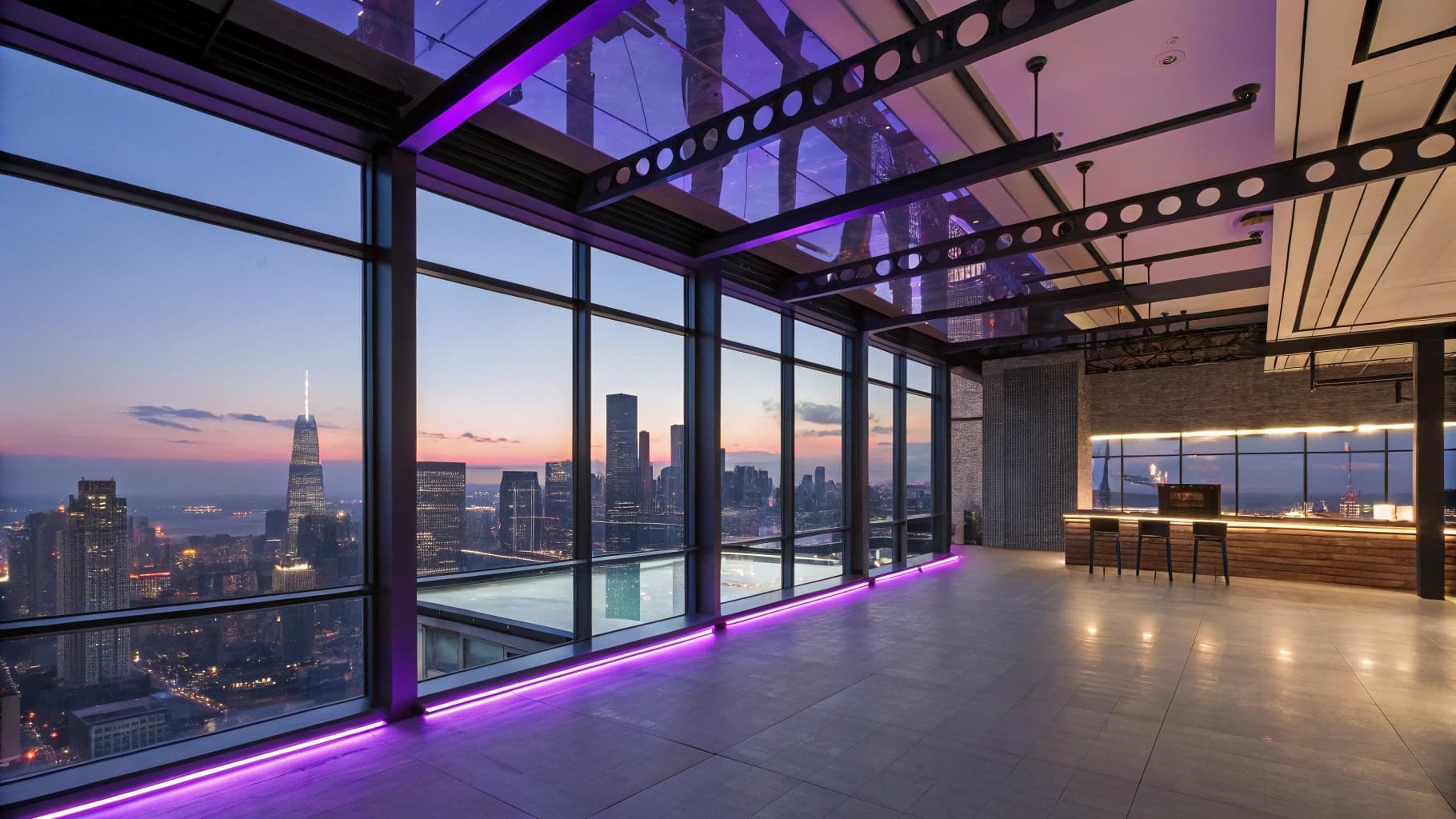Penthouse design has always held a certain allure, representing the pinnacle of urban living. As I delve into the world of penthouses, I find myself captivated by their unique blend of luxury, style, and functionality. These elevated spaces often boast breathtaking views, expansive layouts, and an air of exclusivity that sets them apart from traditional apartments.
The design of a penthouse is not merely about aesthetics; it is a reflection of the lifestyle and aspirations of its inhabitants. Each penthouse tells a story, shaped by the tastes and preferences of those who call it home. In recent years, the concept of penthouse living has evolved significantly.
No longer just a status symbol for the wealthy, penthouses are now being designed with a focus on comfort, sustainability, and modern living. As I explore this evolution, I am intrigued by how urban trends and lifestyle changes have influenced penthouse design. The integration of innovative materials, cutting-edge technology, and eco-friendly practices has transformed these spaces into havens of modernity.
In this article, I will examine the various aspects that define contemporary penthouse design, from urban influences to sustainability and beyond.
The Influence of Urban Trends on Penthouse Design
Urban trends play a pivotal role in shaping the design of penthouses. As cities continue to grow and evolve, so too do the preferences of their residents. I have noticed that many penthouse designs now reflect a desire for open spaces that foster a sense of community while still providing privacy.
This shift is largely influenced by the increasing popularity of co-living spaces and communal areas in urban environments. Designers are now tasked with creating layouts that balance personal retreat with social interaction, allowing residents to enjoy both solitude and connection. Moreover, the rise of remote work has prompted a reevaluation of how space is utilized within penthouses.
I find it fascinating how many designs now incorporate dedicated workspaces that blend seamlessly with the overall aesthetic. This trend not only enhances functionality but also caters to the evolving needs of urban dwellers who seek to maintain a work-life balance in their homes. As I observe these changes, it becomes clear that penthouse design is increasingly responsive to the dynamic nature of urban living, adapting to the lifestyles and preferences of its inhabitants.
Incorporating Sustainability and Green Design in Urban Penthouse Spaces
Sustainability has become a cornerstone of modern design, and penthouses are no exception. As I explore various urban penthouse spaces, I am often struck by the innovative ways in which designers are incorporating green elements into their designs. From energy-efficient appliances to sustainable materials, there is a growing emphasis on creating eco-friendly environments that minimize environmental impact.
I appreciate how these choices not only benefit the planet but also enhance the quality of life for residents. One particularly inspiring aspect of sustainable penthouse design is the integration of green spaces. Many contemporary penthouses feature rooftop gardens or balconies adorned with plants, creating a natural oasis amidst the urban landscape.
I find that these green elements not only improve air quality but also provide a serene escape from the hustle and bustle of city life. The incorporation of biophilic design principles—where nature is brought indoors—further enhances the connection between residents and their environment. As I witness this trend gaining momentum, I am optimistic about the future of sustainable living in urban settings.
Maximizing Space and Functionality in Urban Penthouse Layouts
In urban environments where space is often at a premium, maximizing functionality is essential in penthouse design. I have come to appreciate how clever layouts can transform even the smallest areas into efficient living spaces. Open floor plans have become increasingly popular, allowing for fluid movement between different areas while creating an illusion of spaciousness.
This design approach not only enhances the aesthetic appeal but also encourages social interaction among residents. Additionally, I am fascinated by the creative use of multifunctional furniture in penthouses. Designers are now incorporating pieces that serve multiple purposes, such as sofa beds or extendable dining tables, which cater to the diverse needs of urban dwellers.
This adaptability is crucial in making the most out of limited square footage while ensuring that each area serves its intended purpose effectively. As I explore various penthouse layouts, it becomes evident that thoughtful design can significantly enhance both space utilization and overall livability.
Embracing Minimalist and Modern Aesthetics in Urban Penthouse Design
The minimalist aesthetic has gained significant traction in recent years, particularly in urban penthouse design. I find this trend appealing as it emphasizes simplicity and functionality without sacrificing style. Clean lines, neutral color palettes, and uncluttered spaces create an atmosphere of tranquility that resonates with many urban dwellers seeking refuge from the chaos of city life.
This approach allows for personal expression through carefully curated decor rather than overwhelming visual stimuli. Moreover, modern aesthetics often incorporate natural materials such as wood, stone, and metal, which add warmth and texture to otherwise sleek environments. I appreciate how these elements can create a harmonious balance between contemporary design and organic beauty.
The use of large windows to maximize natural light further enhances this aesthetic, blurring the lines between indoor and outdoor spaces. As I observe this trend in various penthouses, it becomes clear that embracing minimalism can lead to a more mindful and intentional way of living.
The Use of Technology and Smart Home Features in Urban Penthouse Living
Smart Home Features
From automated lighting systems to smart thermostats, these innovations allow for greater control over one’s living environment while reducing energy consumption. The seamless integration of technology into everyday living is not only practical but also elevates the overall experience of residing in a penthouse.
Advanced Security Systems
I have noticed that many houses now incorporate advanced security systems that provide peace of mind for residents. Features such as facial recognition cameras and smart locks ensure that safety is prioritized without compromising on style or aesthetics.
The Future of Urban Living
As I explore these advancements, I am excited about the potential for further innovation in urban living. The possibilities are endless, and I look forward to seeing how technology will continue to shape the urban penthouse experience.
Integrating Urban Art and Cultural Influences in Penthouse Design
Urban art and cultural influences play a significant role in shaping the identity of penthouses within city landscapes. I find it fascinating how designers are increasingly incorporating local art and cultural elements into their projects, creating spaces that reflect the vibrancy of their surroundings. This integration not only adds character to penthouses but also fosters a sense of connection between residents and their community.
I have seen numerous examples where walls are adorned with striking murals or sculptures that celebrate local artists and cultural heritage. These artistic touches serve as conversation starters and create an inviting atmosphere for both residents and guests alike. Furthermore, incorporating cultural influences into design can evoke a sense of pride among residents, making their living spaces feel uniquely theirs.
As I witness this trend gaining momentum, I am reminded of the power of art to transform spaces and enrich lives.
The Future of Urban Penthouse Design: Trends to Watch for
As I look ahead to the future of urban penthouse design, several trends stand out as noteworthy developments on the horizon. One such trend is the continued emphasis on sustainability and eco-friendly practices. As awareness around climate change grows, I anticipate that more designers will prioritize green building materials and energy-efficient technologies in their projects.
This shift will not only benefit the environment but also appeal to a growing demographic of environmentally conscious consumers. Another trend I foresee is the increasing demand for wellness-oriented design elements within penthouses. As mental health becomes an increasingly important focus in our lives, incorporating features such as meditation spaces or wellness rooms will likely become more common in future designs.
Additionally, outdoor living spaces will continue to gain prominence as residents seek ways to connect with nature amidst urban settings. In conclusion, my exploration of urban penthouse design reveals a dynamic landscape shaped by evolving trends and preferences. From sustainability to technology integration, each aspect contributes to creating spaces that are not only luxurious but also functional and reflective of contemporary lifestyles.
As I continue to observe these developments, I am excited about what lies ahead for urban penthouses—spaces that promise to redefine modern living in our ever-changing cities.
FAQs
What are some common urban trends reflected in penthouse design?
Some common urban trends reflected in penthouse design include open floor plans, industrial elements such as exposed brick and ductwork, large windows to maximize natural light, and the use of sustainable and eco-friendly materials.
How does penthouse design incorporate the concept of urban living?
Penthouse design often incorporates the concept of urban living by maximizing space in smaller footprints, incorporating modern and sleek design elements, and offering amenities such as rooftop gardens, outdoor entertaining spaces, and convenient access to urban amenities and services.
What role does technology play in modern penthouse design?
Technology plays a significant role in modern penthouse design, with features such as smart home automation, integrated sound and entertainment systems, energy-efficient appliances, and advanced security systems being commonly incorporated into the design.
How does penthouse design cater to the needs of urban dwellers?
Penthouse design caters to the needs of urban dwellers by offering luxurious and convenient amenities such as private elevators, concierge services, fitness centers, and proximity to urban attractions, dining, and entertainment options.
What are some sustainable design elements commonly found in penthouse design?
Sustainable design elements commonly found in penthouse design include energy-efficient lighting and appliances, green roofs or rooftop gardens, use of recycled and eco-friendly materials, and incorporation of passive design strategies to maximize natural light and ventilation.

